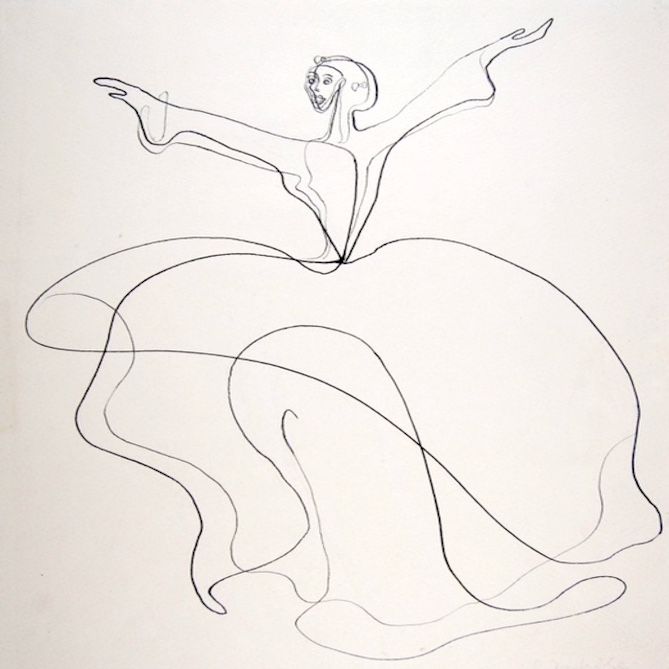Sing. Paint. Dance. (Part 2)
Yes, we can place the bow one inch above the bridge and play various phrases for the purposes of mapping and sensory awareness. We can also take one step back and go about it from a different angle. As we listen to repertoire we can place a brush to canvas or a pencil to paper and emulate phrase length with our hands. We can isolate passages in the score and literally paint them. Feel the duration of notes, their inner lives, through your brush. See the color sustain or fade. Watch the brush as it moves up and down according to contour. For me, although away from the cello, this type of association is the most direct connection to gesture.
Let’s be clear, this does not instantly allow for flawless execution. One must be doing instrumental work in concert with this work so as to connect the sensations and associative threads. But what it creates is freedom – meaning the source of feelings, both physical and emotional is unencumbered.
Another use of painting perhaps goes with saying – COLOR. I so often return to the Chagall exhibit last year at LACMA. It was a phenomenal exploration of his costumes and paintings in association with works of Stravinsky, Mozart, Ravel among others. His art has an almost symbiotic relationship to music. In fact a well known photo of Chagall with Rostropovich often comes to mind as I think of the kind of intimate connection he had to vibration, energy, rhythm and symbolic undercurrents.
He wrote of color’s living energy and spoke of it as a language of expression unto itself. One of my favorite quotes in relationship to Chagall and his work is by Guy Deutscher.
It reads : As strange as it may sound, our experience of a Chagall painting actually depends to some extent on whether our language has a word for blue.
And for me this interwoven relationship is always present with cello playing. Chagall himself wrote : All colors are the friends of their neighbors and the lovers of their opposites. Isn’t that a big YES for sound folks?!
So, painting gives us a fantastic excuse to be our own Chagall. To give life to notes as we hear them in the form of vibrant blues, yellows and greens. To explore non verbal expressions of sound that connect viscerally to our imagination and sense of wonder. When we expand this practice internally we are giving ourselves permission to take the risk to find this color wheel at the instrument.
And this non instrumental exploration should engage our whole bodies, should it not? Our legs have been dormant thus far. So, get up and move! There are so many possibilities with dance and music making. Dance can be the ultimate reflection of pulse, motion, and voicing. It can lend itself towards the physical choreography needed to communicate large gestures and characters and can simply encourage release, and FUN!
For me it is about the process of enlivening sound. Dance takes pulse and turns strong and weak beats into three-dimensional movements. It can also help to encourage tremendous fluidity in works that are deeply benefitted by long phrase length. Just imagine an outstretched arm moving in a circular manner almost pulling a phrase through space and time with ease. Or in Webern, shorter gestures being complete physical expressions unto themselves. Anne Teresa De Keersmaeker is endlessly inspiring on this front. I would encourage anyone to hang out with her work and simply allow yourself to be captivated.
So, I officially only used the word cello once or twice in an entire blog about cello playing. Bring it all back to the instrument, it will thank you. Your musicianship will expand and your presence will be enriched by new sources of inspiration. And maybe in the end, we can connect even more deeply to those with whom we share.




